Hundreds of thousands of wooden shingles cover the contoured form of this pavilion in the grounds of Japan’s Shinshoji Zen Museum and Gardens, which is designed to evoke the shape of a ship’s hull.
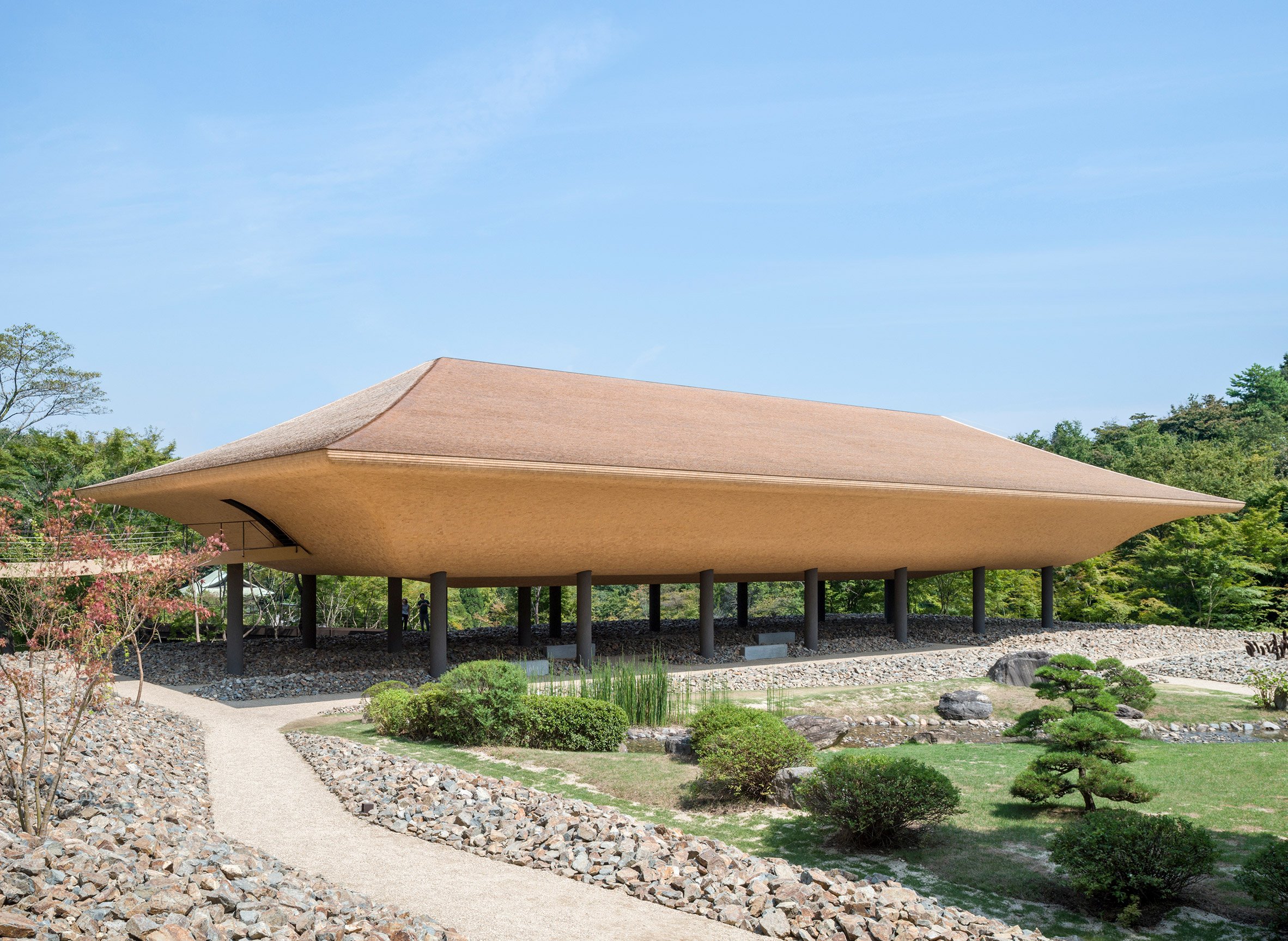
The Kohtei pavilion was added to the gardens in the campus of Tenshinzan Shinshoji temple in Fukuyama city, Hiroshima, which was established as a tribute to workers who lost their lives at sea or as a result of industrial accidents.
The structure was designed by artist Kohei Nawa and architects Yoshitaka Lee and Yuichi Kodai from Nawa’s Kyoto-based creative studio Sandwich, which was commissioned to create an artistic installation that complements the setting of the landscaped gardens.
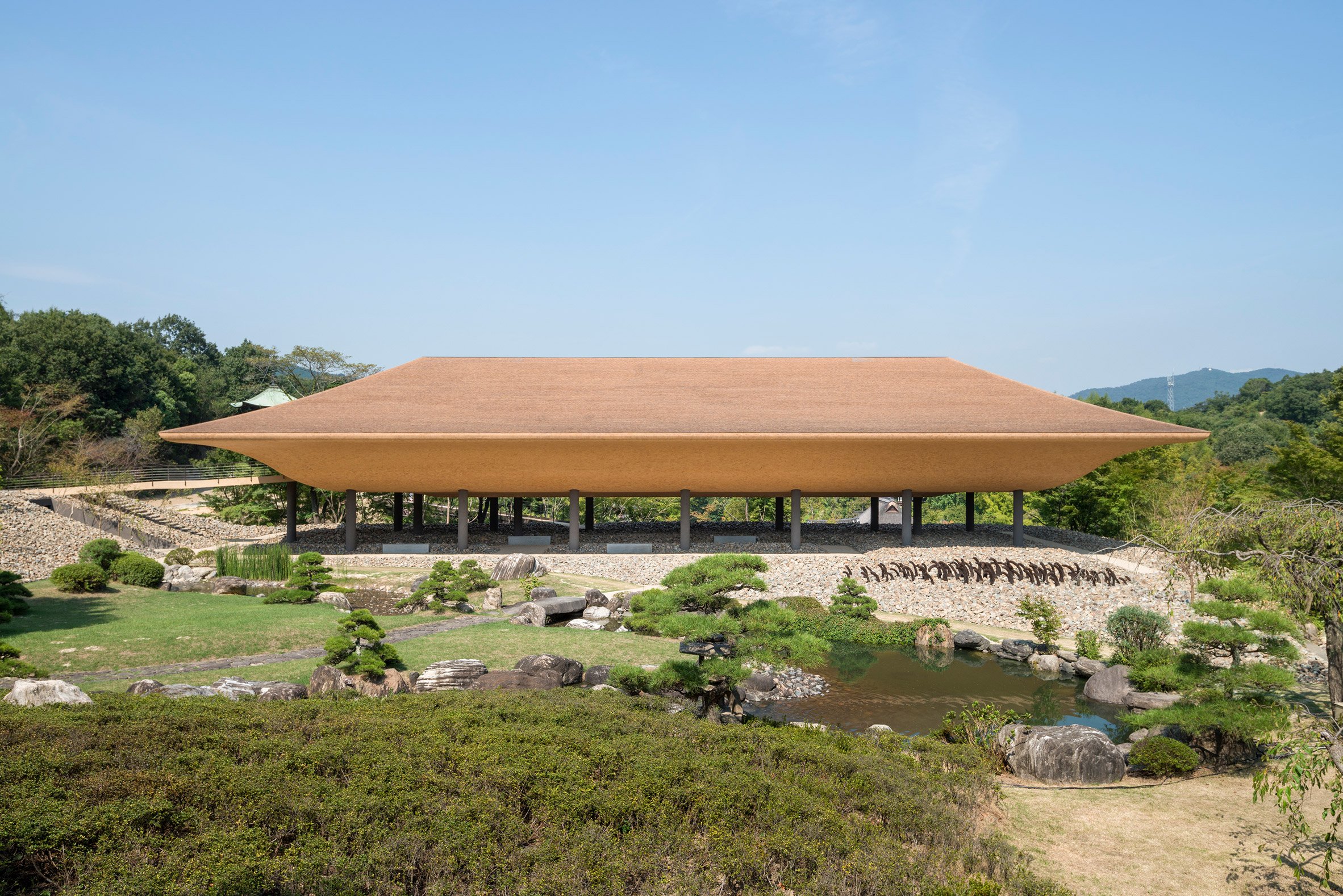
“Kohtei’s distinctive form was inspired by the roots of the temple’s establishment, which led us to create a building that resembles the motif of a ship,” said the project team.
“It is an architecture that floats on waves surrounded by mountains and is themed to work with three fundamental materials: wood, stone and water.”
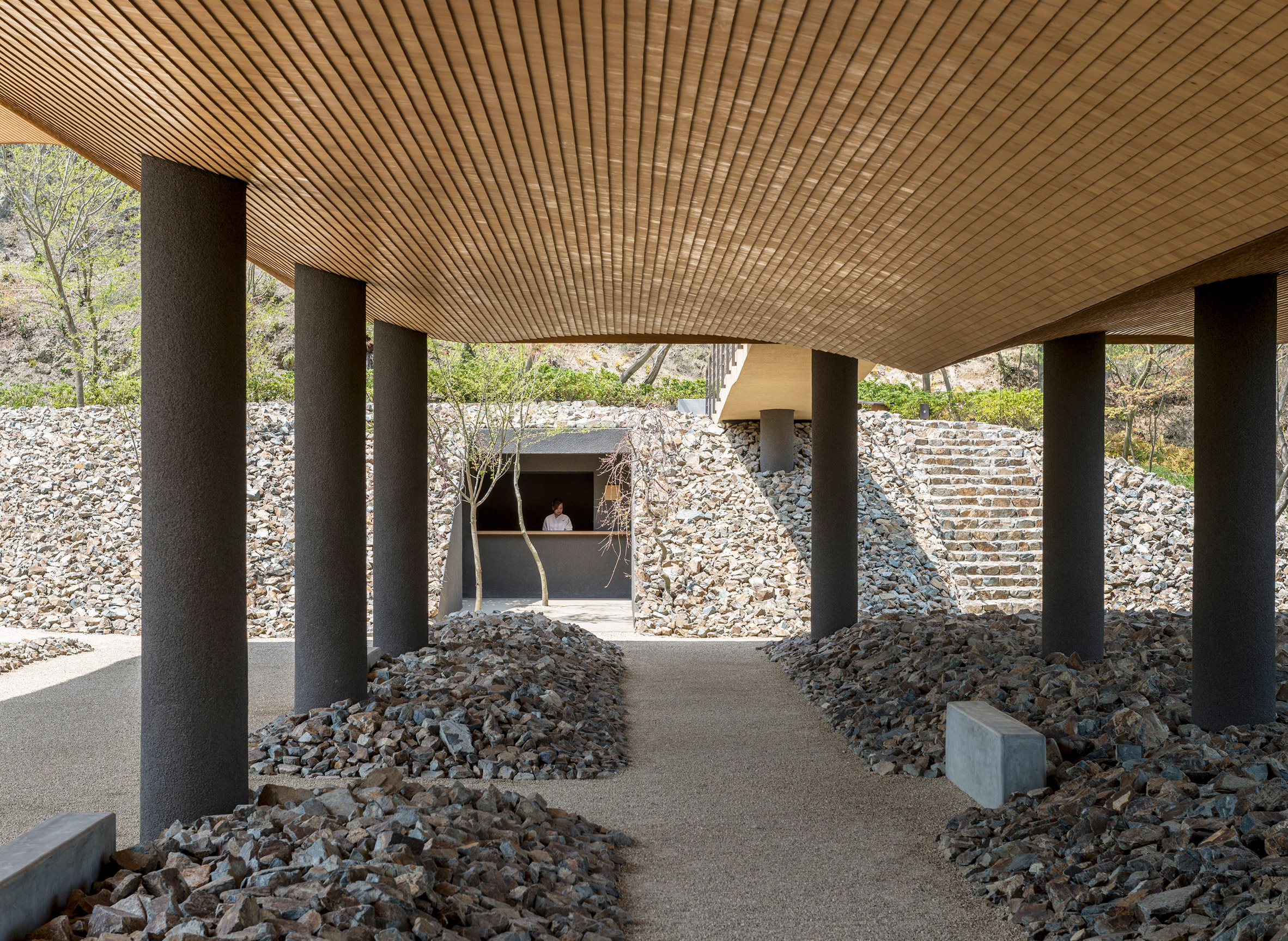
The pavilion is raised above the landscape on two rows of pillars, creating a sheltered space beneath the smooth wooden surface.
Its entire exterior is clad in Japanese cypress shingles applied using the traditional Kokera-buki roofing technique, which involves affixing layers of the thin tiles using bamboo nails.
The roof comprises 340,000 shingles laid by a 16th-generation master roofer from Kyoto. The soffit features 250,000 tiles, creating a smooth surface that lends the structure a monolithic quality when viewed from below.
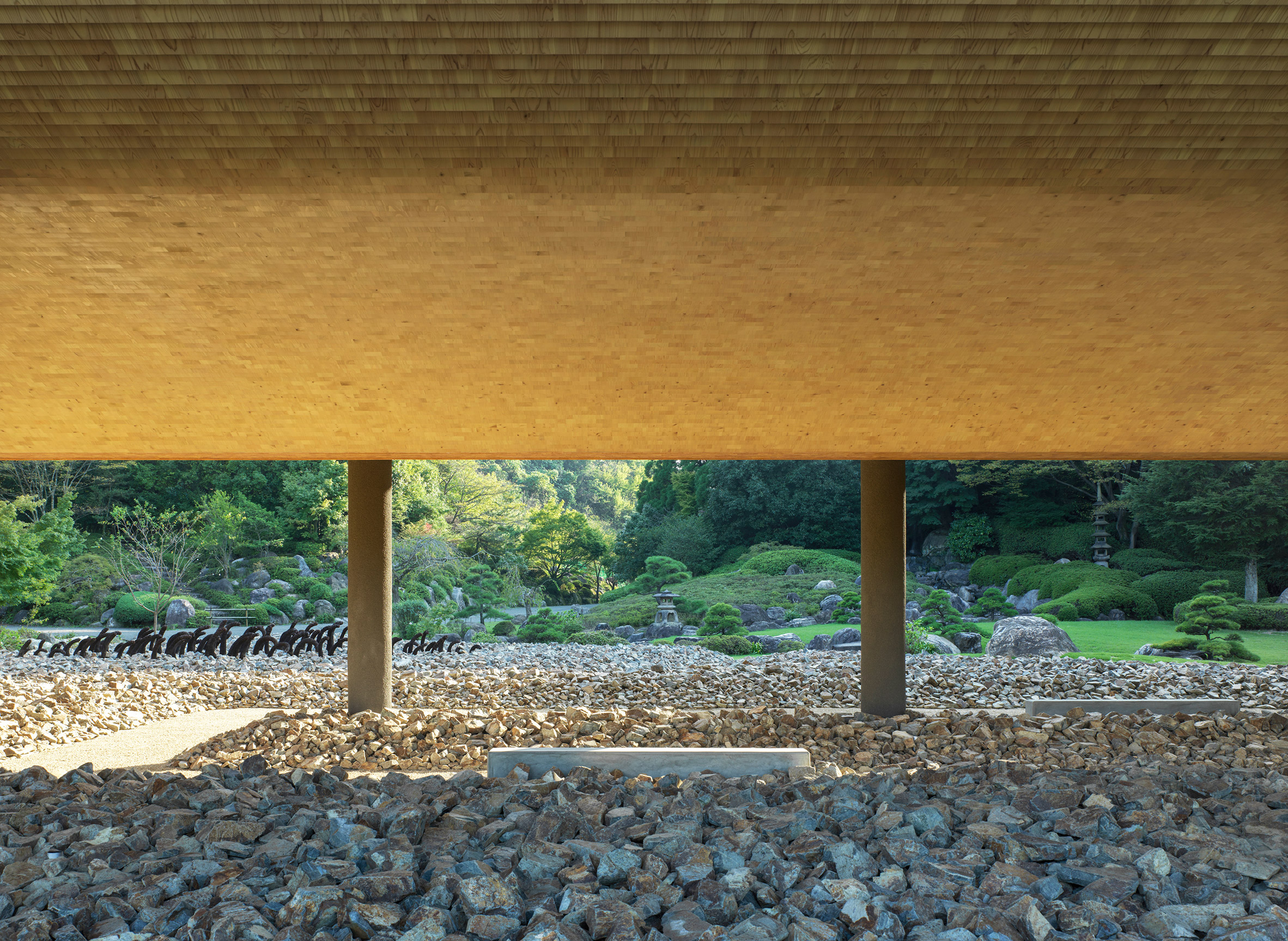
“The experience of standing underneath such a space enhances the stark materiality of the landscape against the airy contours of the wooden roof,” the designers added. “Surrounding views are framed and visitors can experience ever-changing scenery.”
The building appears to float above a landscape featuring loose chunks of locally quarried stone chosen to evoke the surface of the ocean. Gravel paths create routes through the landscape, connecting the building and gardens.
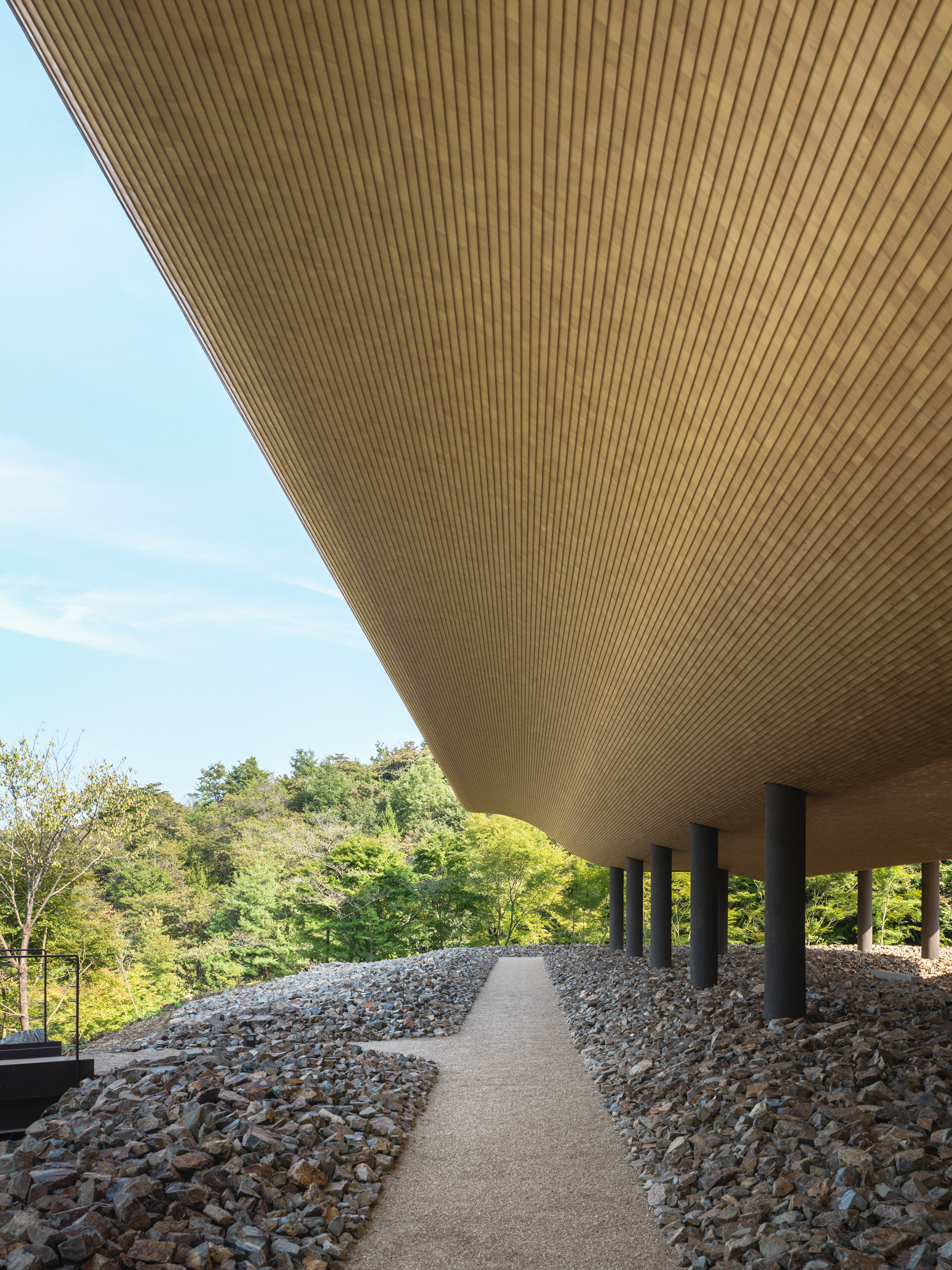
A simple footbridge carries the visitor to a small entrance incorporated into one end of the pavilion. This opening leads into a dark space where a meditative installation intended is located.
“The installation represents the immensity of the ocean and visitors can experience meditation while observing the shimmering lights reflected on the quietly rippling water waves,” the designers explained.
“The darkness together with the faint sound of the room, curiously sharpens the visitor’s vision and auditory senses.”
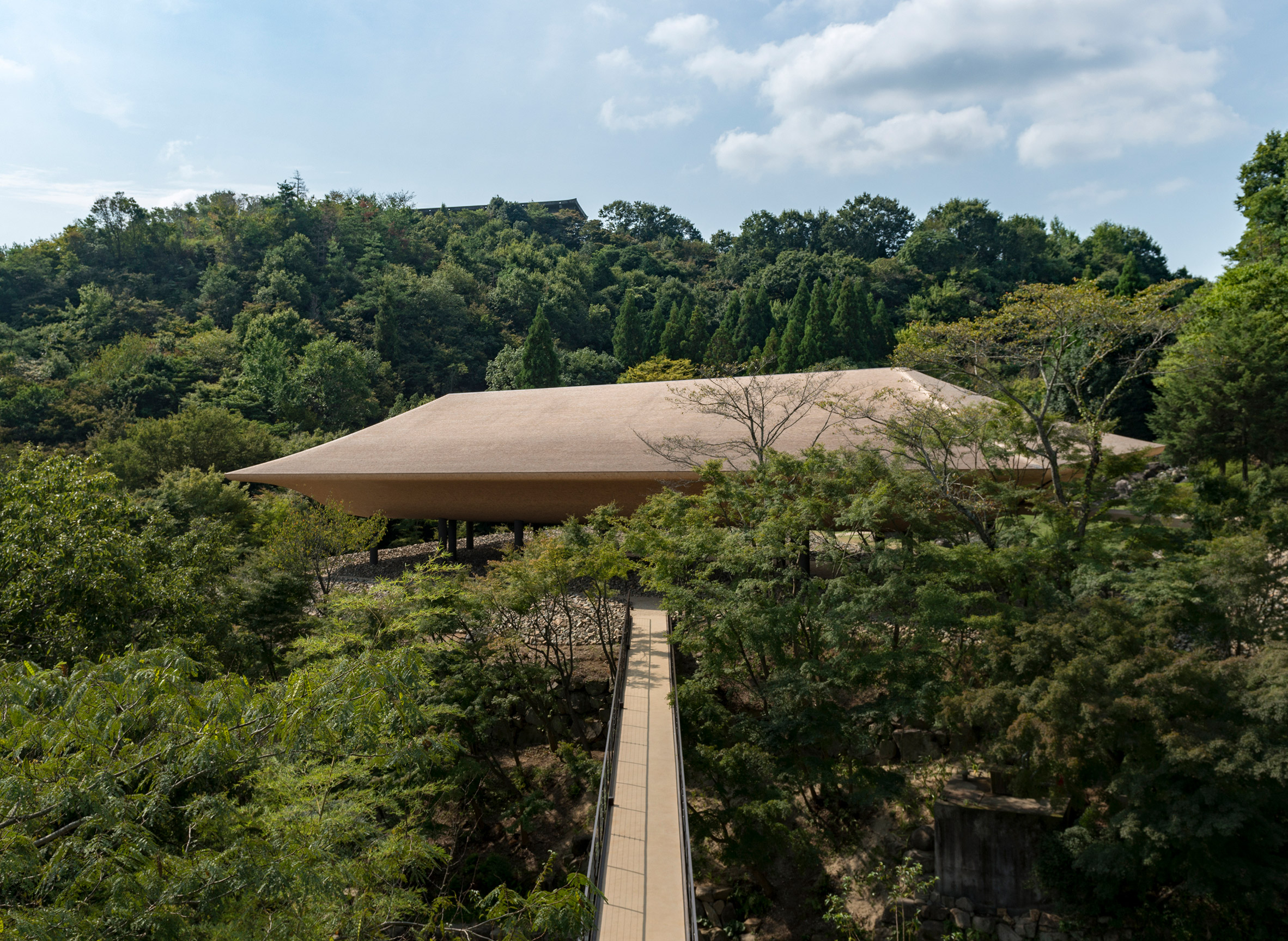
The overall aim of the pavilion is to create a single form where the exterior, interior and sheltered area below all contribute in different ways to the visitor’s experience of the gardens and installation.
Sculptor Kohei Nawa was born in Osaka in 1975 and established Sandwich in 2008 as a platform for his creative activities. The studio previously created a two-storey house featuring a sculptural facade made from three truckloads of timber.
The post Sandwich creates “ship-shaped” art pavilion in Fukuyama to commemorate deaths at sea appeared first on Dezeen.
